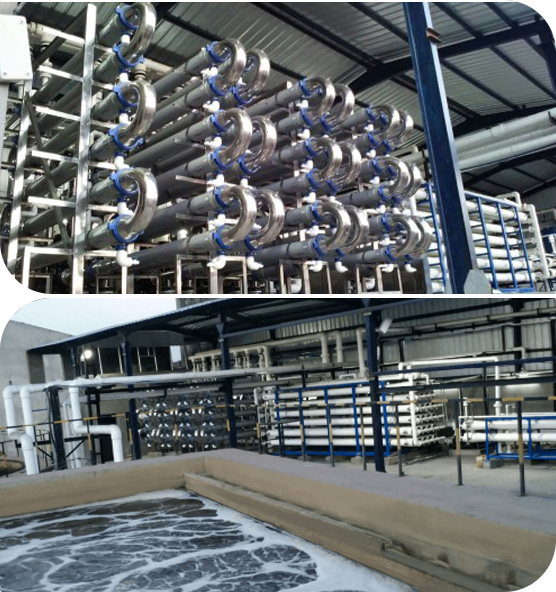
Waterman Engineers Australia is among the primary manufacturers of Zero Liquid Discharge method. A ZLD method can be a cure course of action which happens to be used to eliminate many of the liquid squander from a method. The objective of ZLD h2o procedure is to lessen wastewater economically and make potable drinking water which is fit for typical use. Zero discharge method is an advanced cure strategy that comprises ultrafiltration, reverse osmosis, evaporation and fractional electro deionization. And we're a perfectly-regarded supplier of ZLD systems.
In many Industries, which include electricity, oil & gas, chemical compounds, mining and Other individuals, a great deal of wastewater is generated that should be managed. Conventionally, this discharge of wastewater is done by using a plant outfall to some area water overall body like an evaporation pond, or in some cases deep very well injected. These methods bring on numerous environmental problems by the general public in many areas of the whole world, as water can be a scarce resource and its management needs to be monitored. These fears have resulted within the establishment of ZLD procedures by lots of industries to reduce their environmental footprint and improve sustainability. And, Waterman Engineers Australia are ideal ZLD suppliers you can find for this system.
Homes OF ZERO LIQUID DISCHARGE Process
The Attributes of the Zero Liquid Discharge system may vary dependant upon the unique design and engineering employed. Even so, some prevalent Houses of ZLD devices include things like:
Drinking water Conservation: Considered one of the key aims of ZLD techniques is usually to conserve h2o by reducing the discharge of liquid waste in to the atmosphere.
High H2o Purity: ZLD devices are intended to generate large-high quality h2o that is certainly free of charge from impurities and contaminants, which makes them well suited for use in lots of industrial procedures.
Versatility: ZLD systems will often be intended to accommodate a wide selection of enter liquid streams, which makes them functional and appropriate for use in various industries.
Sophisticated Wastewater Cure: Zero liquid discharge systems use Superior wastewater procedure ways to remove impurities and contaminants from the effluent, making high-excellent h2o.
Waste Reduction: ZLD programs help minimize squander by reducing the volume of liquid waste that should be disposed of and by developing a concentrated, strong waste substance that can be safely disposed of.
Strength Effectiveness: ZLD units may be Vitality-intense mainly because of the high Power demands of evaporation together with other wastewater treatment procedures. However, advances in engineering are producing Zero liquid discharge programs far more Strength-successful and value-successful.
Waterman Engineers Australia manufactures Zero Liquid Discharge (ZLD) techniques created to get rid of all liquid waste, aiming to produce potable h2o and limit environmental affect. Their ZLD programs normally consist of ultrafiltration, reverse osmosis, evaporation, and fractional electro deionization. Important systems utilised are Falling Movie Brine Concentrators, Pressured Circulation Crystallizer, and Other people, with a two-action technique of pre-focus and evaporation/crystallization to Get well and reuse water. These devices are adaptable to diverse industries, emphasizing water conservation, significant water purity, squander reduction, and Power performance. Specialized technical specs are different and customizable, contemplating things like water supply, flow fee, and feed water good quality.
The necessity for Zero Liquid Discharge (ZLD) techniques occurs from the necessity to deal with environmental issues relevant to h2o scarcity and pollution. Zld System Manufacturer Zero Liquid Discharge System In industries like electricity, oil & fuel, and mining, huge amounts of wastewater are produced. Traditionally, this wastewater is discharged into bodies of water, triggering air pollution and depleting clean water assets. ZLD devices purpose to minimize these impacts by treating and recycling wastewater inside of the commercial system, thus conserving h2o, decreasing waste, and marketing sustainability.
When it comes to the complex requirements of the Zero Liquid Discharge (ZLD) process, vital aspects to concentrate on consist of the water source it will treat, the method's movement price, the quality of feed h2o, the levels of treatment method included, the recovery price of h2o, solutions for focus disposal, resources of building, operating conditions, and procedure automation and Regulate. These components ensure the system's success, toughness, and efficiency in managing and recycling industrial wastewater.
Zero Liquid Discharge (ZLD) vegetation provide benefits for instance drinking water conservation, squander reduction, and pollution avoidance, contributing to environmental sustainability. They're relevant in industries like electrical power generation, oil and gasoline, chemicals, and mining, wherever they help in running industrial wastewater properly, reducing the ecological footprint, and complying with rigorous environmental laws. These units are vital in spots going through h2o scarcity and for industries aiming to enhance their sustainability and operational effectiveness.
FAQs for a Zero Liquid Discharge (ZLD) technique often deal with its operational rules, Price tag-usefulness, servicing necessities, environmental influence, applicability across several industries, and regulatory compliance. These questions help end users comprehend the program's Positive aspects, complex requires, and suitability for his or her specific wastewater management wants.
1. Zero Liquid Discharge (ZLD) is a wastewater therapy approach created to eradicate all liquid waste.
2. The procedure's factors are affected by the precise industrial system, wastewater composition, and regulatory requirements.
three. Effluent treatment crops take out pollutants from textile effluents to circumvent environmental contamination.
four. Strengths include things like drinking water conservation, pollution reduction, and regulatory compliance.
5. The intention is to attenuate environmental impression by recycling drinking water and lowering waste.
six-9. Effluent therapy plants are levels in wastewater treatment method: Major (physical separation), secondary (Organic treatment method), and tertiary (Innovative remedy).
ten. Unit operations include things like filtration, sedimentation, biological treatment, and disinfection.
eleven. Limiting parameters are things that have an impact on the remedy's efficiency, like pH and contaminant concentration.
twelve. Layout concerns include stream charge, effluent composition, and wished-for good quality of handled drinking water.